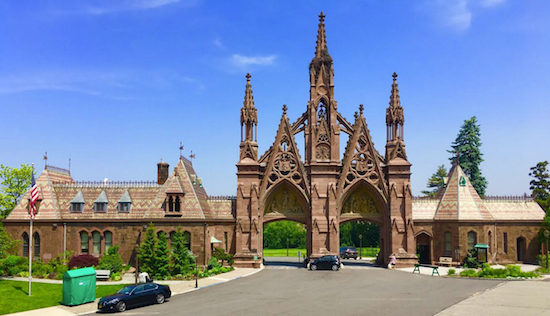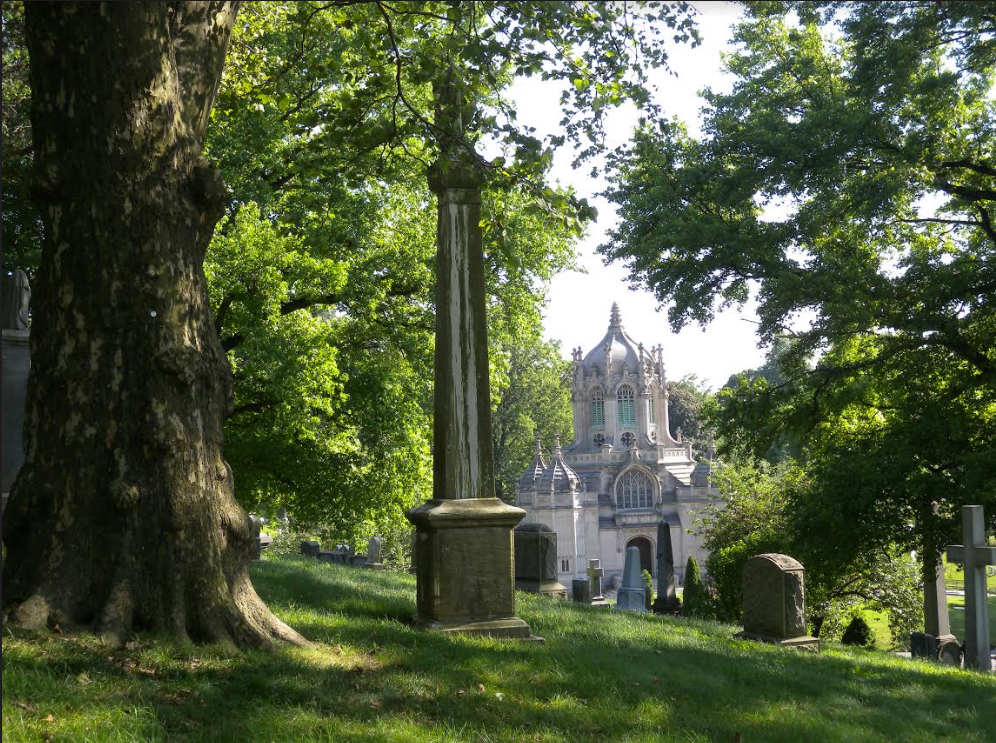Come stroll Fifth Avenue in Greenwood Heights and Sunset Park
Eye on Real Estate

The landmarked entrance to Green-Wood Cemetery. Eagle photos by Lore Croghan
It starts with an arena and ends with a quasi-cathedral.
We’re talking about Fifth Avenue, the commercial and residential corridor that runs from Barclays Center at the edge of Park Slope to big, beautiful St. Patrick’s Roman Catholic Church in Bay Ridge.
The five-mile street passes through Greenwood Heights and Sunset Park, too.
A stroll down the full length of Fifth Avenue will give you a feel for the old-fashioned architecture in these four neighborhoods.
